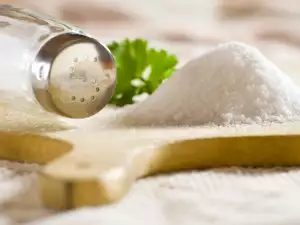Salt is the most commonly used spice after sugar. An unwritten rule is that people use up to 3 times more salt than permissible 3-5 mg daily. Consequences of the abuse of salt can be really dangerous.
Luckily, there is salt not only harms the body, but also helps it. This is represented best by Himalayan salt, often referred to as white gold. It is a miracle of nature, which contains more than 84 chemical elements. Himalayan salt has an almost perfect crystal structure established in the Himalayas.
Legends say that this salt’s production began in 320 BC when Alexander the Great stationed troops near the banks of the Indus River in the foothills of the Salt chain. He noticed that his horse was licking rocks. It is considered one of the largest and old salt deposits in the world. On its territory, there are 4 salt mines. The yield of Himalayan salt is carried out manually.
Yielding is from large stone blocks, which are washed, sorted and dried in the sun. It is then crushed to the required size and packaged. Because of the high degree of purity, which is protected from the current dirt, Himalayan salt does not demineralise. This allows the maintenance of its crystal structure.
Sodium chloride is often called the silent killer. One of the worst consequences of the use of salt is hypertension. Sodium has the ability to retain the water in the body, forcing it to eliminate potassium, thereby increasing the work of the kidneys.

Specialists believe that every gram of excess salt leads to the retention of 0.8 oz (23 g) excess water in the body whose activities are cellulitis and dehydration of cells. Among other things, the body seeks to get rid of excess sodium chloride, which results in its deposition in joints, organs and blood vessels. Himalayan salt is the perfect healthy substitute for table salt.
Composition of Himalayan salt
Himalayan salt contains more than 97% of sodium chloride, and a number of vital elements and minerals that are absorbable in ionic form. These are calcium, potassium, phosphorus, magnesium and its pink color due to the contained iron.
Selection and storage of Himalayan salt
Himalayan salt can now be found in most stores in different weights. Can be purchased directly with a mill. It is much more expensive than ordinary salt, but its advantages are endless.
The price varies depending on weight, and it is stored like ordinary table salt - in a cool dry place away from direct sunlight.
Himalayan salt can completely replace ordinary salt in both raw and cooked food. Many people say that the taste of Himalayan salt is nice and prefer it. It is used to flavor salads, cooked dishes, soups and everything you can put table salt on.

Benefits of Himalayan Salt
Himalayan salt restores electrolyte balance in the body, while at the same time helps detoxify it. Normalizes blood pressure and strengthens blood vessels, reduces levels of bad cholesterol in the blood.
Himalayan salt stimulates the activity of nerve cells at the same time improves the process of information exchange. It has a positive effect on skin diseases and diseases of the respiratory system.
Improves cellular metabolism and nutrition, promote better utilization of medicines and food supplements. Prevents painful muscle cramps and strengthens bones, significantly reduces the risk of developing osteoporosis. Recommended for use by pregnant women, because it improves the composition of the amniotic fluid.
Himalayan salt may be used for gargles, rinses for the mouth with gingivitis, cleansing sinuses and facials. It is a great addition to bath salts.
To detoxify the body, mix 1 teaspoon Himalayan salt, with 1 cup water. Drink this on an empty stomach every morning. A number of people who have tried this detox claim that it regulates the activity of the intestines and stomach, regulates digestion and your metabolism.




















Comments